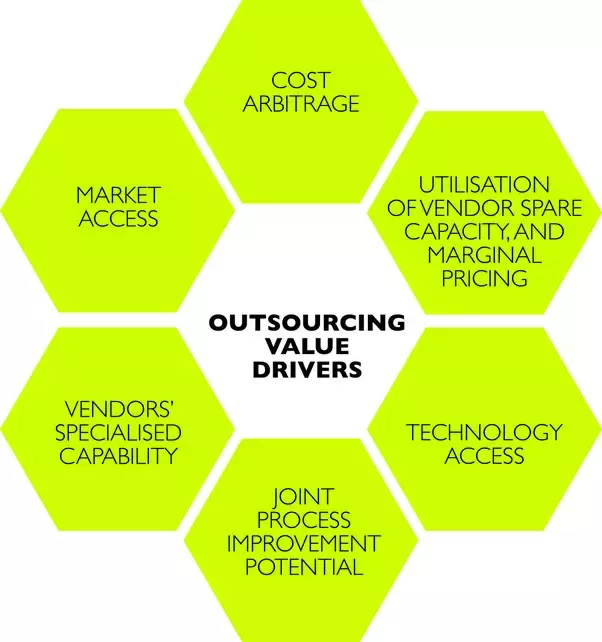The faster your business expands, the greater the need for working capital. If you don’t have enough working capital — the money necessary to keep your business running — your business is doomed to fail. Many companies that are profitable on paper are forced to “close their doors” because they are unable to pay off short-term debt when it matures. However, by implementing solid working capital management strategies, your business can flourish. In other words, your wealth works for you!
At one time or another, most companies feel the need to borrow money to finance their growth. The ability to obtain a loan depends on the creditworthiness of a company. The two main factors that determine creditworthiness are the presence and scope of collateral and the liquidity of the company. Your company’s balance sheet is used to evaluate these two factors. On your balance sheet, working capital represents the difference between current assets and current liabilities – the capital you currently have to finance business operations. This number, as well as your key working capital metrics, show your creditors your ability to pay your bills.
By definition, working capital is a company’s investment in working capital – cash, marketable securities, trade receivables and inventory. The difference between a company’s current assets and current liabilities is called net working capital. Current liabilities include trade payables, deferred expenses and the short-term portion of loan or lease payments due. The term “short-term” is generally defined as those assets or liabilities that are liquidated over the course of a business cycle, usually one year.
Decisions on working capital and short-term financing are referred to as working capital management. These decisions involve managing the relationship between a company’s current assets and its current liabilities. The goal of working capital management is to ensure that your company is able to continue its operations and that it has sufficient cash flow to cover both current debt due and upcoming operating costs.
The true test of a company’s ability to manage its financial affairs depends on how well it manages its conversion of assets into cash, which ultimately pays the bills. The ease with which your company converts its current assets (receivables and inventories) into cash to meet its ongoing obligation is called “liquidity.” Relative liquidity is calculated as — ratio of current assets to current liabilities. The interest rate at which receivables and inventories are converted into cash has an impact on liquidity. If all other things are the same, a company that has a higher ratio of working capital to current liabilities is more liquid than a company with a lower ratio.
Most business activities affect working capital by either consuming working capital or generating it. A company’s cash goes through a number of stages in the working capital cycle. The working capital cycle begins with the conversion of cash into commodities, the subsequent conversion of raw materials into products, the conversion of products into sales, the conversion of sales into receivables, and finally the conversion of receivables into cash.
The main goal of working capital management is to minimize the amount of time it takes money to go through the working capital cycle. The longer it takes for a company to convert its inventory into receivables and then convert its receivables into cash, the greater the cash flow difficulties. Conversely, the shorter a company’s working capital cycle, the faster cash and profits from loan sales are realized.
A proper cash flow forecast is indispensable for successful working capital managementslich. To understand the extent and timing of cash flows, presenting cash movement using cash flow forecasts is crucial. A cash flow forecast gives you a clearer picture of your cash sources and their expected arrival date. Identifying these two factors will help you determine “what” you spend the money on and “when” you need to spend it.
Working capital management includes the management of cash, inventories, accounts receivable, accounts payable and short-term financing. Because the following five working capital processes are interconnected, decisions made in each of the disciplines can impact the other processes and ultimately affect your company’s overall financial performance.
- Cash management: Cash Management is the efficient management of cash in a business to make cash work faster and keep the cash in applications that generate income. The use of banking services, lockers and sweep accounts provides both the quick credit of the funds received and the interest income from the deposited funds. The Lockbox service includes collecting, sorting, summing and recording customers’ payments during the processing and execution of the required bank deposits. A sweep account is a pre-arranged, automatic “sweep” – by the bank – of funds from your checking account to a high-interest account.
- Inventory: Inventory management is the process of procuring and maintaining an appropriate inventory assortment under control of the costs associated with ordering, storage, shipping and handling. The use of an Economic Order Quantity (EOQ) system and the Just-In-Time (JIT) inventory system provides uninterrupted production, sales and/or customer service levels at minimal cost. The EOQ is an inventory system that displays the quantities to be ordered – reflecting customer demand – and minimizes overall ordering and holding costs. The EOQ inventory system uses sales forecasts and historical customer sales reports. The JIT inventory system relies on suppliers to ship products for the just-in-time arrival of raw material in manufacturing. The JIT system reduces the storage space required and lowers the dollar level of inventory.
- Accounts Receivable Management: Accounts receivable management enables you as an entrepreneur to control your entire credit and collection process intelligently and efficiently. Better insight into a customer’s financial strength, credit history, and trends in payment behavior is paramount to reducing your risk of bad debts. While a Comprehensive Collection Process (CCP) greatly improves your cash flow, strengthens the development of new markets, and develops a broader customer base, CCP depends on your ability to quickly and easily make informed credit decisions that establish appropriate lines of credit. Your ability to quickly convert your receivables into cash is possible if you execute clearly defined collection strategies.
- Accounts payable: Accounts Payable Management (APM) is not simply “paying the bills.” The APM is a system/process that monitors, controls and optimizes the money a company spends. Whether or not it is money spent on goods or services for direct input, such as raw materials used in the manufacture of products, or money spent on indirect materials, such as office supplies or various expenses that are not a direct factor in the finished product, the goal is to: having a management system that not only saves you money, but also controls costs.
-
Short-term financing: Short-term financing is the process of securing funds for a company for a short period of time, usually less than a year. The main sources of short-term financing are trade credits between companies, loans from commercial banks or financial companies, factoring of debtors and business credit cards.
Trade credits are a spontaneous source of financing, as they arise from ordinary business transactions. In a pre-agreed agreement, suppliers ship goods or provide services to their customers, who in turn pay their suppliers at a later date.
It’s a smart investment of yours Efforts/time to agree and establish a revolving line of credit with a commercial bank or financial company. In the event that a need for cash should arise, the funds would then be readily available. By arranging a line of credit before capital requirements (cash), your business will not experience any sales or production interruptions due to cash shortages.
Factoring is a short-term financing obtained by selling or transferring your receivables to a third party – at a discount – for immediate cash payment. The percentage discount depends on the age of the receivables, how complex the collection process will be and how recoverable they are.
A business credit card is quick and easy, eliminating the need to approve funds. Using your business credit card also protects you from losses if you may receive damaged goods or not receive goods that you have already paid for. Depending on the type of credit card you choose for your business, you can earn bonuses, frequent flyer miles, and cashback. However, keep a close eye on your expenses and pay most, if not all, of your debt each month.
To effectively manage working capital, it is advisable to measure your progress and control your processes. A good rule of thumb is- – – If you can not measure it, you can not control it. The five working capital metrics that will help you evaluate and measure your progress are:
- Inventory Turnover Ratio (ITR): ITR = cost of goods sold / average value of inventories. The ITR indicates how quickly you hand over the inventory. This ratio should be compared to the averages in your industry. A low turnover rate implies poor sales and thus excess inventory. A high rate implies either strong sales or ineffective purchases.
- Receivables Turnover Ratio (RTR): RTR= Net Credit Sales / Receivables. RTR-GmbH indicates how quickly your customers return payments for products/services provided. A high rate implies that a company is either operating on a cash basis or that its credit expansion and collection of receivables is efficient. A low rate means that the company should re-evaluate its credit policy to ensure the timely collection of loans granted that do not earn interest on the company.
- Payables Turnover Ratio (PTR): PTR = Cost of Sales / Payables. Calculate this ratio to determine how quickly you pay your suppliers. If you consistently exceed the industry norm, you may have developed leverage that makes it easier to negotiate discounts or other favorable terms.
- Current ratio (CR): CR = Total current assets / Total current liabilities. The CR is primarily used to determine a company’s ability to repay its current liabilities (liabilities and liabilities) with its current assets (cash, inventory, debtors). The higher the current quota, the better the company is able to meet its obligations.
- Quick Ratio (QR): QR = (Total Current Assets – Inventory) / Total Current Liabilities Also known as the “Acid Test Ratio”, the QR predicts your immediate liquidity more accurately than the current ratio because it takes into account the time it takes to convert inventory into cash. The higher the QR, the more liquid the company is.
Working capital management is crucial for small businesses because a large portion of their debt consists of short-term liabilities versus long-term liabilities. Small businesses can minimize their investment in fixed assets by renting or leasing plant and equipment. However, there is no way around investing in receivables and inventories. Therefore, current assets are of particular importance to the owner of a small business. By effectively shortening the working capital cycle, you become less dependent on debt financing. In other words, your working capital really works for you.
Copyright 2008 Terry H. Hill:
business vehicle finance
#Making #working #capital #work
- The winner of the Hottest Firefighter promises: “I’ll stay dedicated to saving lives.” - December 1, 2022
- Smiling influencer caught on camera kicking a dog apologizes for sharing the ‘cruel act.’ - December 1, 2022
- What is full coverage auto insurance in Florida? - November 14, 2022



